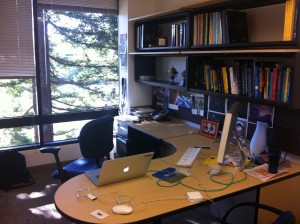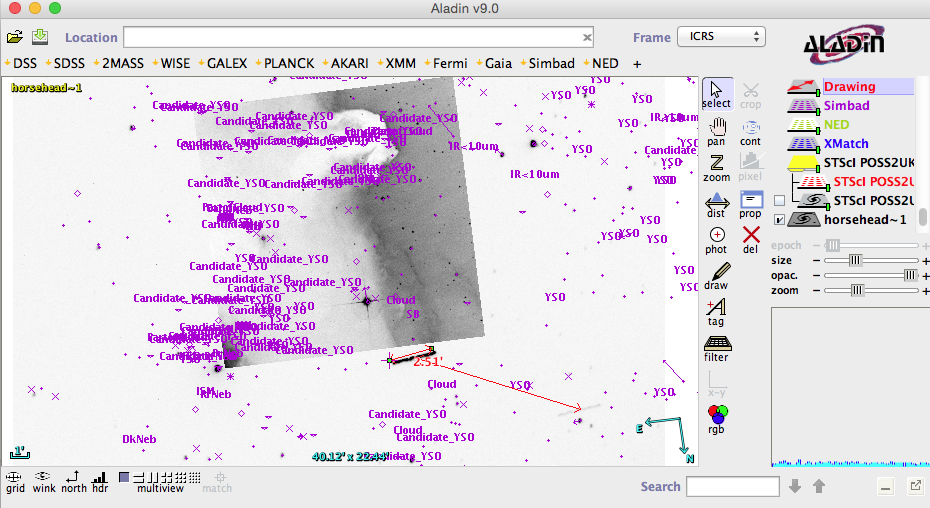Three months without a post…
I am "SETI-less" but not for long.
September 9, 2010Quiescent volcanic activity on Io in November 2010
December 8, 2010It has been almost three months that I did not post anything on this blog. My last post written on September 9 was about the moving to a new location of the SETI Institute. I am happy to say that the moving is now completely finalized. We are back!
While the institute was closed for a month, I moved most of the computers of our group at UC-Berkeley. Because several of my students are based at UC-Berkeley the disruption for our group was minor. On October 1, I moved back to the new SETI Institute to find my office almost identical to the previous one and ready to be set up. It took me almost 1.5 month to unpack, and I proudly took this picture last week when it was done.
The new SETI Institute is located at 189 San Bernardo Avenue at Mountain View, CA. Most of us like our new building even if there are still some adjustment to be done with the A/C, internet connection and so on. We have more space and several empty offices to host new and motivated researchers! You are all welcome to attend our colloquium every Wednesday at noon. I will try to remember to post on this blog an announcement.
So beside the moving what happened recently? I have discovered and used more and more Twitter (@AllPlanets) which allowed me to keep contacts with my colleagues, post significant results and discuss with astronomy-aficionados. Even if I was reluctant to use it, I should admit that it is a fantastic tool to engage people and to get quickly information.
If you follow me on Twitter you might know that my month of October was hectic with a mix of conferences, meetings and observations. Beginning of October, I attended the DPS conference at Pasadena, CA and presented in a 7-min talk our results on the mutual orbits of triple asteroids in the mainbelt. I will write a blog about this result in the future. This conference gave me also the opportunity to see the work of my colleagues, met and discussed with them. The highlight was definitely discovering the wonder of Lutetia collected by the ESA Rosetta mission during its recent flyby. We had another run at Lick Observatory to test the FIRST instrument which was partially successful due to poor weather. I presented the instrument concept and its first light at the Keck Strategic meeting at UC-Berkeley. The first results are promising and we identified how we could improve the potential of the instrument.
I dedicated the month of November to finalize and submit an article on the spectroscopic data analysis of the component of the doublet asteroid (90) Antiope. I presented this work in 2009 at the DPS conference in Porto Rico and I can’t believe that it took me 1 year to write and submit this article to Icarus Journal. At least after one year of refining analysis, we are certain about the similarities of these components implying that they are coming from the same body. Hopefully, the paper will be quickly accepted. With the precious help of my research assistant, Emilio Enriquez, we collected near-infrared spectra of multiple asteroid using the IRTF telescope located on the top of Mauna Kea, Hawaii remotely from UC-Berkeley in September and November. We also observed Jupiter outbreak using this telescope. Finally, a few days ago I had two half-nights of observations at Keck telescope to search for multiple asteroids.
Strangely enough, a posteriori I am forgetting the time I spent writing observing proposals (~6 of them) for Keck, VLT, Gemini, Lick and IRTF telescopes and funding grants submitted to the NSF-AAG and NSF-ATI programs even if it took a significant part of my time in October and November.
Then without warnings, Thanksgiving was knocking on my door, after eating too much, we went skiing and I realized that I did not write anything on this blog for almost 3 months. Now I am back, so get ready for more posts.
F.



